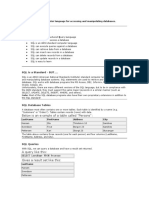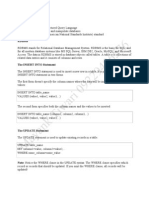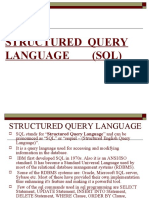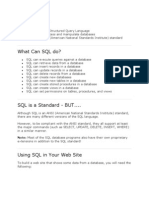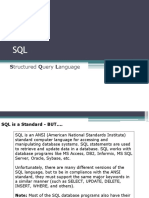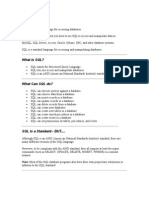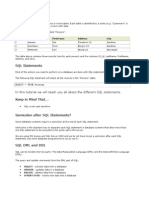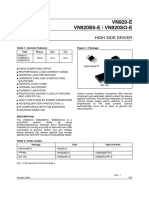0% found this document useful (0 votes)
16 views8 pagesDDL DML Reviewer
The document provides an overview of SQL syntax, including the structure of database tables and the distinction between Data Manipulation Language (DML) and Data Definition Language (DDL). It explains various SQL commands such as SELECT, INSERT, UPDATE, and DELETE, along with clauses like WHERE, ORDER BY, and JOINs. Additionally, it covers operators, wildcards, and the use of aliases in SQL queries.
Uploaded by
Gray SmithCopyright
© © All Rights Reserved
We take content rights seriously. If you suspect this is your content, claim it here.
Available Formats
Download as PDF, TXT or read online on Scribd
0% found this document useful (0 votes)
16 views8 pagesDDL DML Reviewer
The document provides an overview of SQL syntax, including the structure of database tables and the distinction between Data Manipulation Language (DML) and Data Definition Language (DDL). It explains various SQL commands such as SELECT, INSERT, UPDATE, and DELETE, along with clauses like WHERE, ORDER BY, and JOINs. Additionally, it covers operators, wildcards, and the use of aliases in SQL queries.
Uploaded by
Gray SmithCopyright
© © All Rights Reserved
We take content rights seriously. If you suspect this is your content, claim it here.
Available Formats
Download as PDF, TXT or read online on Scribd
/ 8



